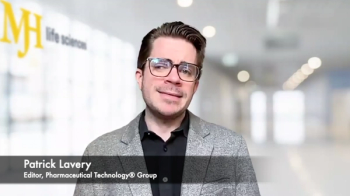
- BioPharm International-01-02-2011
- Volume 2011 Supplement
- Issue 1
Toll-Like Receptor Agonists: Not Just for Vaccines Anymore
The role of TLR agonists has expanded, and now the molecules can be found in a variety of non-vaccine therapeutics.
ABSTRACT
In recent years molecular biologists have developed an increasingly sophisticated understanding of the role of toll-like receptors (TLR) on various cells of the immune system and how ligand-binding of these receptors can either enhance or repress the activity of a particular cell type. As a result, various toll-like receptor ligands have been used as vaccine adjuvants with increasing frequency in recent years.
The ability to modulate the immune response has been an important feature of vaccine adjuvants—specifically the ability of adjuvants to strengthen a relatively weak immune response to a particular antigen in a vaccine preparation. In recent years, molecular biologists have developed an increasingly sophisticated understanding of the role of toll-like receptors (TLR) on various cells of the immune system and how ligand-binding of these receptors can either enhance or repress the activity of a particular cell type. As a result, various TLR ligands have been used as vaccine adjuvants with increasing frequency in recent years. Indeed, a vaccine containing a TLR4 agonist (Cervarix) has recently been approved in the US and Europe.
(TEK IMAGE/SPL, GETTY IMAGES)
But the importance of immunomodulation is not limited to vaccine formulations. Augmenting the immune response can confer clinical benefits in a variety of diseases including cancer, while dampening the response can be important in therapeutics for autoimmune diseases. As such, the role of TLR agonists has expanded, and now the molecules can be found in a variety of non-vaccine therapeutics.
In nature, TLR ligands are viral or bacterial components that bind TLRs and modulate the activity of the immune cell to which they preferentially bind. These days, molecules with TLR-binding activities can be synthesized and optimized for their binding affinities and immune-modulating function.
The first TLR7 agonist product, Aldara (imiquimod 5% cream), produced by 3M, was approved in 1997 for the topical treatment of external genital warts, actinic keratosis (a precancerous lesion of the skin), and basal cell carcinoma. Since then, 3M has synthesized well over 10,000 distinct molecules that act either as selective TLR7, selective TLR8, or as TLR7/8 agonists. These agonists have potential utility against a broad spectrum of diseases including a variety of dermatologic indications, atopic diseases like asthma and allergy, viral infections and cancers, in addition to a number of molecules for use as vaccine adjuvants with a variety of vaccines.
A second generation topical TLR 7/8 agonist was recently licensed by 3M to a leading European dermatology company to treat a variety of skin conditions for use in Europe and Asia. Another TLR7 agonist that is more potent, more selective, and easier to formulate than imiquimod, 852A has been in Phase 1 studies and has shown a good safety profile in single-dose studies. It also is possible to use this topical cream for treatment of mucosal diseases, such as anogenital warts and human papilloma virus (HPV) infections of the vagina and cervix. Yet another selective TLR7 agonist, S-34240, can be used as a dermatologic product that can be sterilized. As such, it is being studied as a topical formulation for the treatment of diseases like post-surgical scarring and wrinkles. Currently, the molecule is in preclinical development.
852A also has been developed in an injectable form for the treatment of cancer. The compound has been in Phase 2a studies to treat melanoma. In animal models, 852 has shown antitumor activity as a stand-alone agent and has demonstrated synergistic effects when given in combination with certain chemotherapeutic agents. Another follow-on compound, 854, activates immune cells through both TLR7 and TLR8 and is in preclinical development for the treatment of cancer. Because it has broader activation of immune cells than selective TLR7 agonists, it may have potential utility for cancers not treated by 852.
TLR7 and TLR8 agonists have also been found to inhibit T helper type 2 (Th2) immune responses. Atopic diseases such as allergy and asthma appear to be because of overstimulation of Th2 responses, and therefore it is possible to treat allergy and asthma with a topically applied TLR7/8 agonist. Indeed, 3M scientists have shown that the TLR 7/8 agonist 854 is able to inhibit a number of activities associated with allergies and asthma. We have developed a nasal formulation of 854 for application to the nose to treat allergic rhinitis. This formulation has been evaluated in preclinical toxicology studies as well as rhinitis models and has shown good tolerability and efficacy in these models.
As science continues to elucidate the complex controls governing immune responsiveness, we can expect to see an increasing role for TLR agonists as vaccine adjuvants and beyond.
MARK TOMAI is the business development director at 3M Drug Delivery Systems, St. Paul, MN, 651.733.5375,
Articles in this issue
almost 15 years ago
Novartis's Influenza Vaccine Programalmost 15 years ago
Evolution of Live-Attenuated HIV Vaccinesalmost 15 years ago
Virosomes: A Novel Strategy for Drug Delivery and TargetingNewsletter
Stay at the forefront of biopharmaceutical innovation—subscribe to BioPharm International for expert insights on drug development, manufacturing, compliance, and more.





